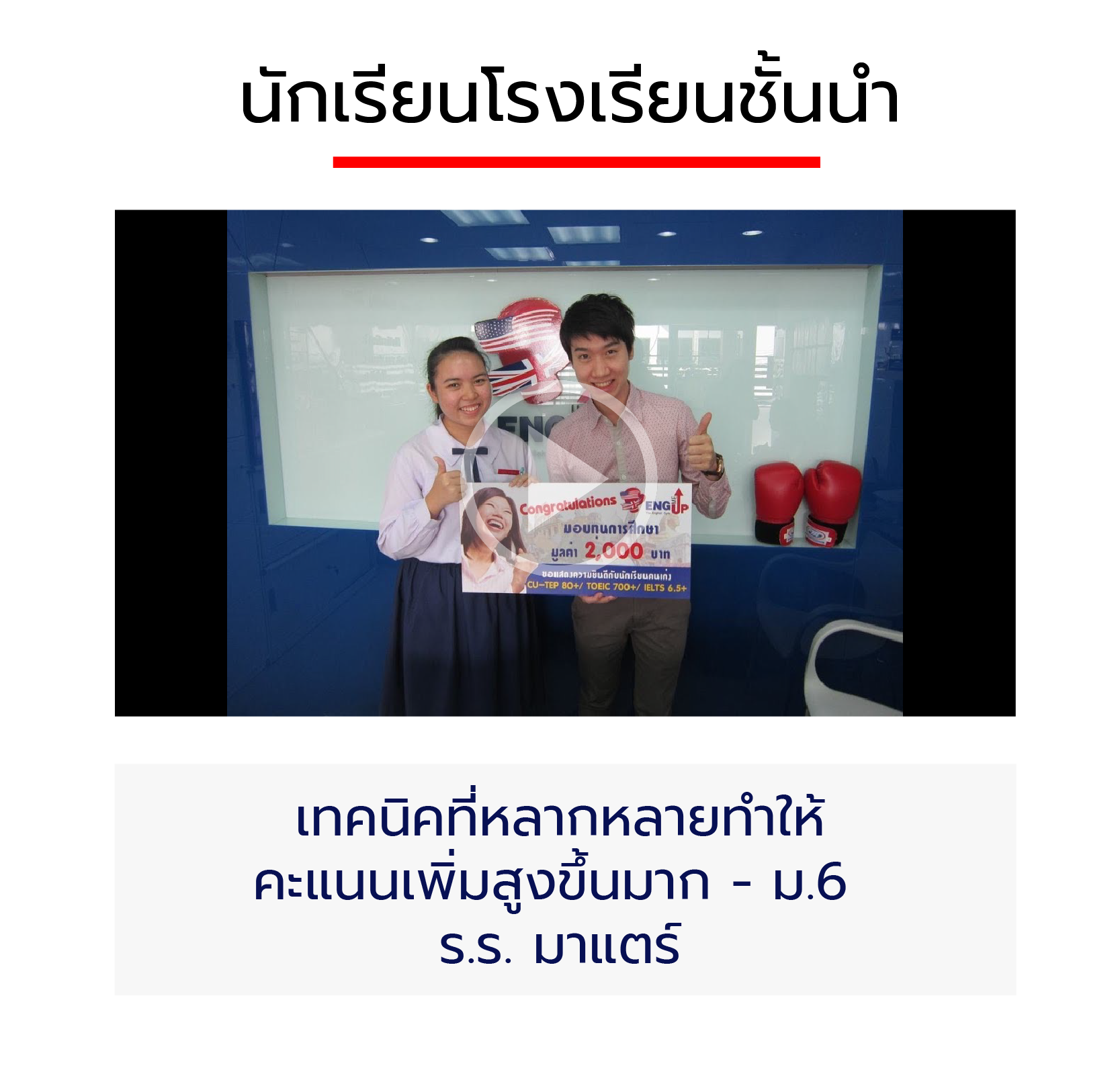Mini Chapter 16
เมื่อเวลามีจำกัด … การเลือกกลยุทธ์การอ่านจึงสำคัญ
ตอนที่ 3: กลยุทธ์ที่ 1 กลยุทธ์ที่ 2 ตื๊อเท่านั้นที่ครองโลก
ในบาง Passage จาก 10 ข้อ เป็นคำถามประเภท Detail Question ไปแล้ว 7-8 ข้อ … การที่เราจะมานั่งอ่านแบบ Standard Reading Technique อ่านไปเรื่อยๆตามลำดับ เข้าใจภาพใหญ่ทั้งหมด ก็คงไม่ใช่เรื่อง
เมื่อเราเจอ Passage แบบนี้ หลายคนชอบครับ เพราะไม่ต้องแยกโครงสร้างได้เก่งมากนัก ไม่ต้องเข้าใจ Passage แบบทะลุปรุโปร่งเน้นกลยุทธ์ Scanning คือ ตื๊อเข้าไว้ … เพียงแค่วง keyword ในคำถาม แล้วอาศัยตาไว กลับไป Scan หาๆๆ ใน Passage
เคล็ดลับเป็นยังไง Chapter นี้ มีคำตอบครับ!
อาจารย์โจบอกเคล็ดลับไว้นิดนึง
ว่าส่วนใหญ่คำถาม Detail จะค่อนข้างใจดีครับ
คือ เรียงจากบนลงล่างมาเรื่อยๆ
(อ้อ! เกือบลืมไป ยังไงก็อยากให้อ่านช่วงต้นๆ กับปลายๆ ของเรื่องเพื่อให้เห็นว่ากำลังจะอ่านเรื่องอะไร หรือจบลงอย่างไรก่อนนะครับ จะได้พอจับทางภาพใหญ่ๆ ถูกบ้าง ซึ่งแน่นอนครับว่า ในหลักสูตรก็จะมี Pattern การขึ้นต้นและลงท้ายของ Passage ในหลายๆ รูปแบบ เพื่อให้เราจับทางและอ่านได้ไวขึ้น ซึ่งการเข้าใจ Pattern ของ Passage จะเป็นการฝึกให้เราเป็น Active Reader คือคาดเดาล่วงหน้าว่าเขาจะเขียนอะไรต่อไปได้ และทำให้เราอ่านได้ไวและมีประสิทธิภาพมากขึ้นกว่าการเป็น Passive Reader คืออ่านไปเรื่อยๆ แปลไปเรื่อยๆ สุดท้ายก็เหมือนที่อาจารย์บอกเคยไว้ โดนเนื้อเรื่องพาไหลไปส่วนที่เป็นน้ำๆ สุดท้ายตีความภาพใหญ่ผิดอีก เศร้าเลยทีนี้ อุตส่าห์อ่านได้ รู้ศัพท์เยอะ)
คำถาม Detail 2 รูปแบบ
ขณะนี้คุณกำลังอ่าน Blog ในฉบับ Lite ซึ่งมีการตัดบางบทและบางเนื้อหาออก หากต้องการเข้าถึงเนื้อหาฉบับเต็ม คลิกดูวิธีอ่าน Full Version โดยคลิกที่รูป















